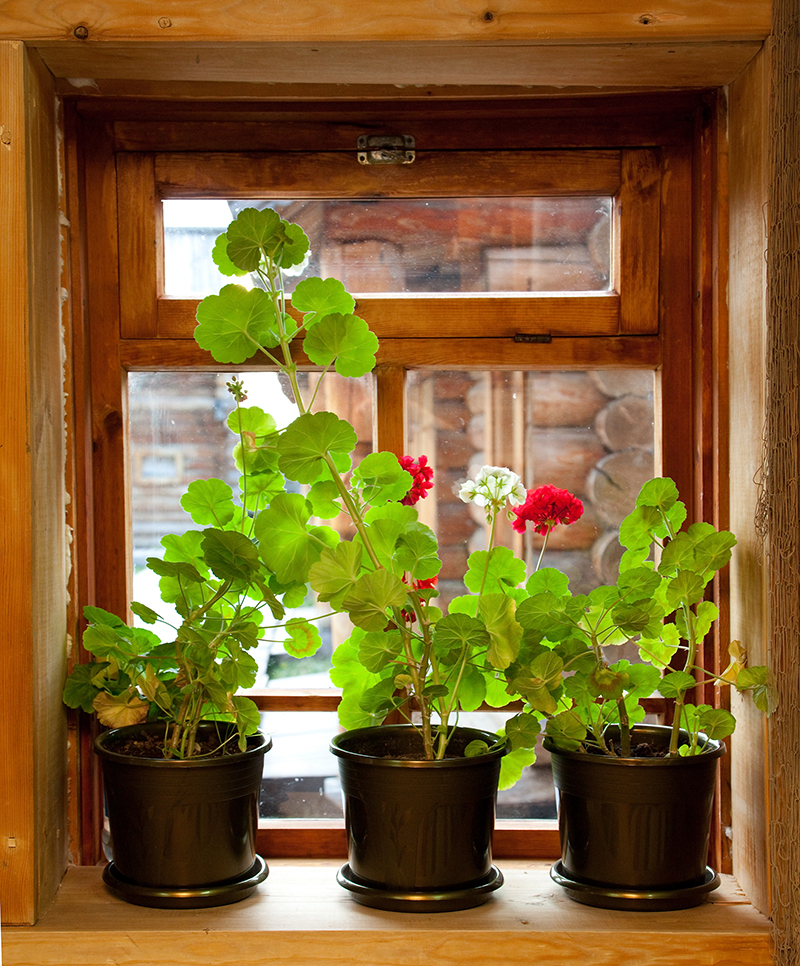Poinsettia Care Tips for Prolonged Beauty
Posted on 17/08/2025
Poinsettia Care Tips for Prolonged Beauty
Poinsettias are undeniably one of the most iconic symbols of the holiday season. Their beautiful, brightly-colored bracts lend elegance and warmth to homes during the winter months. However, keeping poinsettia plants looking their best long after the holidays requires certain know-how and attention. In this comprehensive guide, we will reveal essential poinsettia care tips that will help you enjoy their vibrant beauty for as long as possible. Let's uncover how to nurture these festive plants and maximize their lifespan!

Understanding Your Poinsettia
The first step in providing the best care for poinsettias is understanding what these plants need. Poinsettias (Euphorbia pulcherrima) are native to Mexico and Central America, thriving in warm, tropical climates. While the showy red, pink, or cream "petals" of the poinsettia are often mistaken for flowers, they are actually modified leaves called bracts. The actual flowers are the small yellow buds at the center.
- Scientific Name: Euphorbia pulcherrima
- Common Name: Poinsettia
- Origin: Mexico & Central America
- Main Attraction: Colorful bracts, not the flowers
- Bloom Time: Winter, especially December
Now, let's dive into essential practices to keep your poinsettias thriving and prolong their splendid appearance!
Best Indoor Placement for Longevity
Proper placement is critical for maximizing poinsettia plant longevity. These plants are sensitive to changes in temperature, drafts, and direct sunlight. To maintain your poinsettia's vibrant color and strength:
- Choose a sunny location: Place your poinsettia near a window that receives bright, indirect light for at least 6 hours each day.
- Avoid cold drafts and hot air: Keep them away from open windows, exterior doors, or heating vents, which can quickly dry out or chill the plant.
- Maintain ideal temperatures: The optimal range is 65-75?F (18-24?C) during the day, dropping to around 60?F (15?C) at night. Avoid exposure to temperatures below 50?F (10?C).
A consistent, warm environment is the secret to preventing premature leaf drop and faded bracts.
Watering Your Poinsettia Properly
How Much Water Is Enough?
One of the most common mistakes with poinsettia care is overwatering. These plants dislike "wet feet," which can provoke root rot and leaf loss. But they also don't tolerate drying out completely!
- Check the soil moisture regularly. Insert your finger about an inch deep into the potting mix.
- Water only when the surface feels dry to the touch.
- Water thoroughly, but let excess moisture drain. Don't let the pot sit in standing water.
- Discard excess water in the saucer after each watering.
Signs of Watering Issues
- Yellowing leaves and leaf drop: Usually a sign of overwatering.
- Wilting or curling: May indicate underwatering or overheated location.
*Pro tip: If your poinsettia came in a decorative foil wrapper, poke drainage holes or remove the covering before watering to prevent waterlogging the roots.*
Humidity and Air Circulation Needs
Poinsettias appreciate moderate humidity, similar to their natural tropical climate. Indoor heating during winter can create very dry air, stressing your plants.
- Group your houseplants together: This creates a micro-environment with higher humidity.
- Use a humidity tray: Place pebbles and water in a shallow tray near your plant, ensuring the pot isn't submerged.
- Mist lightly: Occasionally mist the leaves with room-temperature water, avoiding the flowers.
- Ensure airflow: Avoid crowding or stagnant conditions, as this can invite fungal issues.
Balanced humidity supports prolonged poinsettia blooms and healthy foliage.
Fertilizing for Health and Color
During their display period (from purchase through the winter), poinsettias usually don't require fertilizing. However, if you plan to keep your plant for future reblooming, proper nutrition becomes important. Here are key points for best results:
- Do not fertilize while in full bloom: Fertilizer isn't required and can harm sensitive roots during this stage.
- Begin feeding in spring: When new green growth emerges (usually around March or April), start a monthly feeding routine using a balanced, all-purpose fertilizer diluted to half strength.
- Avoid overfeeding: Excess fertilizer can burn roots or lead to salt buildup.
*Fertilizing in the appropriate season is one of the best long-term poinsettia care strategies for plant vigor and color intensity.*
Managing Light Exposure for Colorful Bracts
Light is essential for maintaining poinsettia color and encouraging future blooming. Bracts may fade or fail to color without enough light or with too much direct sun.
- Provide bright, indirect sunlight: Direct midday rays can scorch bracts, while insufficient light produces dull color.
- Rotate your plant: Turning it every few days ensures even growth and color development.
- Artificial grow lights: If natural sunlight is limited, well-placed LED or fluorescent plant lights can supplement during the darkest winter months.
*Proper lighting is vital for poinsettia plant beauty and longevity.*
Deadheading and Pruning for Prolonged Beauty
To keep your poinsettia looking fresh and encourage new blooms, a little maintenance goes a long way:
- Deadhead spent flowers: Remove faded or dried flower buds with clean, sharp scissors to extend blooming period.
- Remove yellow leaves: Promptly cut off any yellow, wilting, or damaged leaves to stop potential fungus or disease.
- Prune in late spring: After bracts fade, cut main stems back to 6 inches to encourage bushier growth and prepare for re-blooming next season.
Pruning isn't just for looks--it revitalizes your poinsettia for another year of color!
Repotting and Long-Term Care
If you're committed to keeping your poinsettia alive and vibrant past a single winter, you may need to repot it:
- Use fresh potting soil (preferably peat-based) and a slightly larger container in spring.
- Gently tease roots apart before placing in the new pot, and water well.
- Consider placing outdoors in a lightly shaded spot after last frost if local climate allows, bringing back inside before the next winter.
*Repotting strengthens root systems, encourages healthy growth, and aids in reblooming efforts.*
Common Poinsettia Problems and Solutions
Dropped Leaves or Bracts
This is often due to sudden temperature changes, cold drafts, or overwatering. Ensure your plant remains at a steady temperature and follow proper watering guidelines.
Pale Bracts or Faded Color
Usually a sign of inadequate light. Move to a brighter spot (but not direct sun) and rotate the plant periodically.
Fungal Issues or Root Rot
Caused by excess moisture and poor air circulation. Always let the soil surface dry out slightly between waterings and remove decorative sleeves that trap moisture.
Pest Infestations
Look out for whiteflies, spider mites, or aphids. Rinse affected leaves gently or apply insecticidal soap, and isolate infested plants to prevent spreading.
How to Rebloom Your Poinsettia
If you'd like to keep your poinsettia beautiful year after year, here's how to trigger the iconic color transformation again:
- Maintain regular care: Water and fertilize through spring and summer, providing bright but indirect light.
- Force darkness in fall: Starting in late September or early October, white bracts require 14-16 hours of total darkness each night for about 8-10 weeks. Place your plant in a dark closet or cover with a box from evening to morning, then return to bright light during the day.
- Resume normal care: When bracts begin to color (usually mid-November), stop the darkness treatment and keep in ideal light and temperatures.
*This process mimics the natural seasonal cues in Mexico, ensuring your poinsettia turns vibrant for the holidays every year!*
Frequently Asked Questions
Are Poinsettias Poisonous to Pets?
While poinsettia toxicity is widely exaggerated, the plants can cause mild stomach upset or drooling if nibbled by pets. Keep them out of reach, but rest assured they are not deadly.
Can Poinsettias Live Year-Round?
Absolutely! With attentive care, good light, and occasional repotting, your poinsettia can thrive as a year-round houseplant and rebloom for many seasons to come.

Quick Tips for Prolonged Poinsettia Beauty
- Bright, indirect light every day sustains leaf and bract color.
- Avoid extremes of temperature and drafts.
- Water only when soil feels dry--not on a schedule.
- Keep humidity moderate; group with other plants or use a humidity tray.
- Prune after blooming and feed during active growth (spring and summer).
- Repot in fresh soil in spring if keeping for another year.
Conclusion
Keeping a poinsettia beautiful beyond the festive season is entirely possible with the right approach. Consistent poinsettia care--including correct light, water, temperature, and nutrition--ensures your plant remains a vibrant part of your home decor for months or even years. Now that you're empowered with poinsettia care tips for prolonged beauty, you can enjoy these brilliant plants whether it's the holidays or any time of year!
For more expert plant care guides, bookmark this page and share it with friends eager to make their poinsettias last!
Latest Posts
Poinsettia Care Tips for Prolonged Beauty
Valentine's Day: 5 Must-Have Flowers to Gift
Mastering the Art of Orchid Care





